A BROOKLYN CHRISTMAS TREE PROJECT (1927)
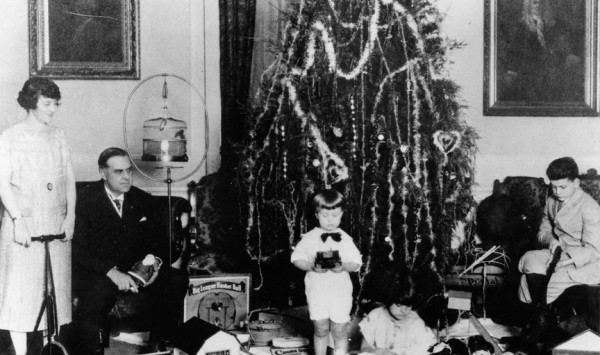
******************************************************************************************************************************** Brownstone Detectives investigates the history of our clients’ homes. The story you are about to read was composed from research conducted in the course of one of those investigations. Do you know the history of YOUR house? ******************************************************************************************************************************** What did Brooklyn boys and girls do on Christmas morning in 1927? Well, they probably opened a present or two, played with their toys, frowned at their new underwear, and such. But later on when the kids had played their toys out – or, in poorer families, if there weren’t many toys to give out to children, the ever-diligent Brooklyn Daily Eagle‘s Junior Eagle section had a cut-out project with which such children could amuse themselves. No, it was not a Red Ryder BB gun, (those wouldn’t be introduced for another ten years), but it was something, and it must have worked as such projects were often included in the pages of this newspaper throughout the year. And it is amazing what occupied childrens’ minds back then. So, try it – if you like – this Christmas. Click on the picture and follow the directions. You never know. “Cut out the trees. Crease on dotted lines and paste the four together, each at right angles to the other, as shown in the sketches.” Follow @BrownstoneDetec Share ———————————————————————————————————————– The Brownstone Detectives Brownstone Detectives is an historic property research agency. Our mission is to document and save the histories of our clients’ homes. From our research, we produce our celebrated House History Books […]
WHERE WAS THIS PICTURE TAKEN? PT. II (1924)
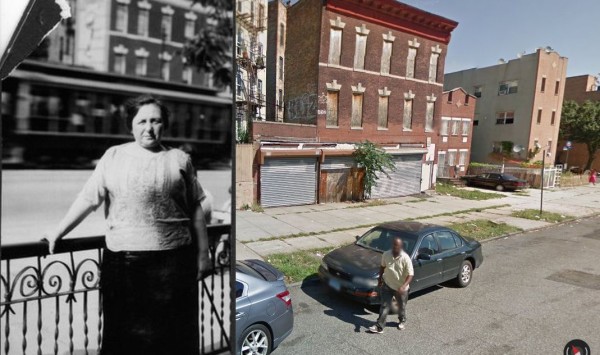
Junior Brownstone Detectives! In last week’s episode, “Where Was This Picture Taken, Pt. I,” we challenged you to a task of monumental proportions: “Study an historic photograph and determine where in Brooklyn it was taken.” As you’ll recall, while the photograph had some distinguishing elements in it, the location of the subject was not immediately discernible. Each of the elements therein could have been found within any of the sections of the borough. We decided, though, that studying the elements of the picture itself, along with just a bit of information about the individual within the picture, we might determine, with great specificity, exactly where the photograph was taken. Today, we are going to review some sources that the Brownstone Detectives use on a daily basis to solve everyday dilemmas such as this one. AN HISTORICAL DETECTIVE’S TOOLKIT Where do we begin when attempting to determine the Brooklyn location of an old photograph? There are a number of resources that can be of use in any mystery such as this. For the particular one we’ve presented you with, though, we will list the resources that we often use and show you how to use them in attempting to find a solution: Ancestry.com – If you have a name connected with the subject in the photo, as we did, this is always a good place to begin your search. At Ancestry.com, using the search function, place any names that you have into the engine, and then see what pops up. With […]
WHERE WAS THIS PICTURE TAKEN? (1924)
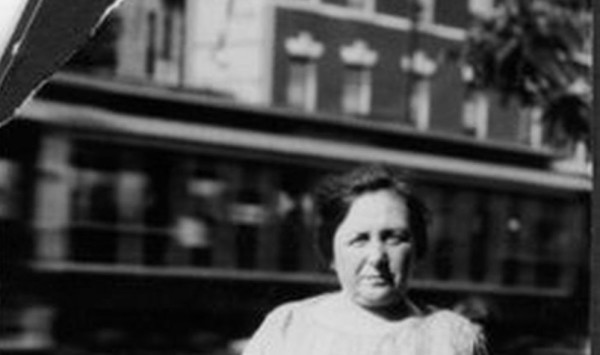
Calling all junior Brownstone Detectives! Today we have a mystery for you to solve! We invite you to come along with us as we grapple with another enigma – discerning the exact source and location of a common celluloid snapshot! EXAMINING THE EVIDENCE Have you ever come across an old family photograph and wondered when and where it was taken? You study the dog-eared snapshot and a few things immediately stand out: • A woman leans against an iron fence. • Behind her is a distinct-looking row of buildings. • A streetcar whizzes by in the background. Not much to go on, you decide, and so you think, “There must be thousands of places where this could have been taken!” And there are. But there are also many ways of whittling that list of places down and possibly even finding the exact spot where your family member (and the photographer) stood when that picture was taken. And all it really takes is a little deductive reasoning, my dear Watson! So, put on your junior Brownstone Detectives caps, set your brains to “quizzical,” and let’s go on an adventure together – through Brooklyn of the “Roaring ’20s”! ANALYZING THE CLUES First of all, we must analyze the clues we’ve listed above. Since this is a family member, we already have some background information about the woman in the picture. The woman is your great-grandmother, Sarah Bilson, and she was married to Harris Bilson. They had two kids, one of which was […]
THE NAMING OF A CLINTON HILL HOUSE (1850)
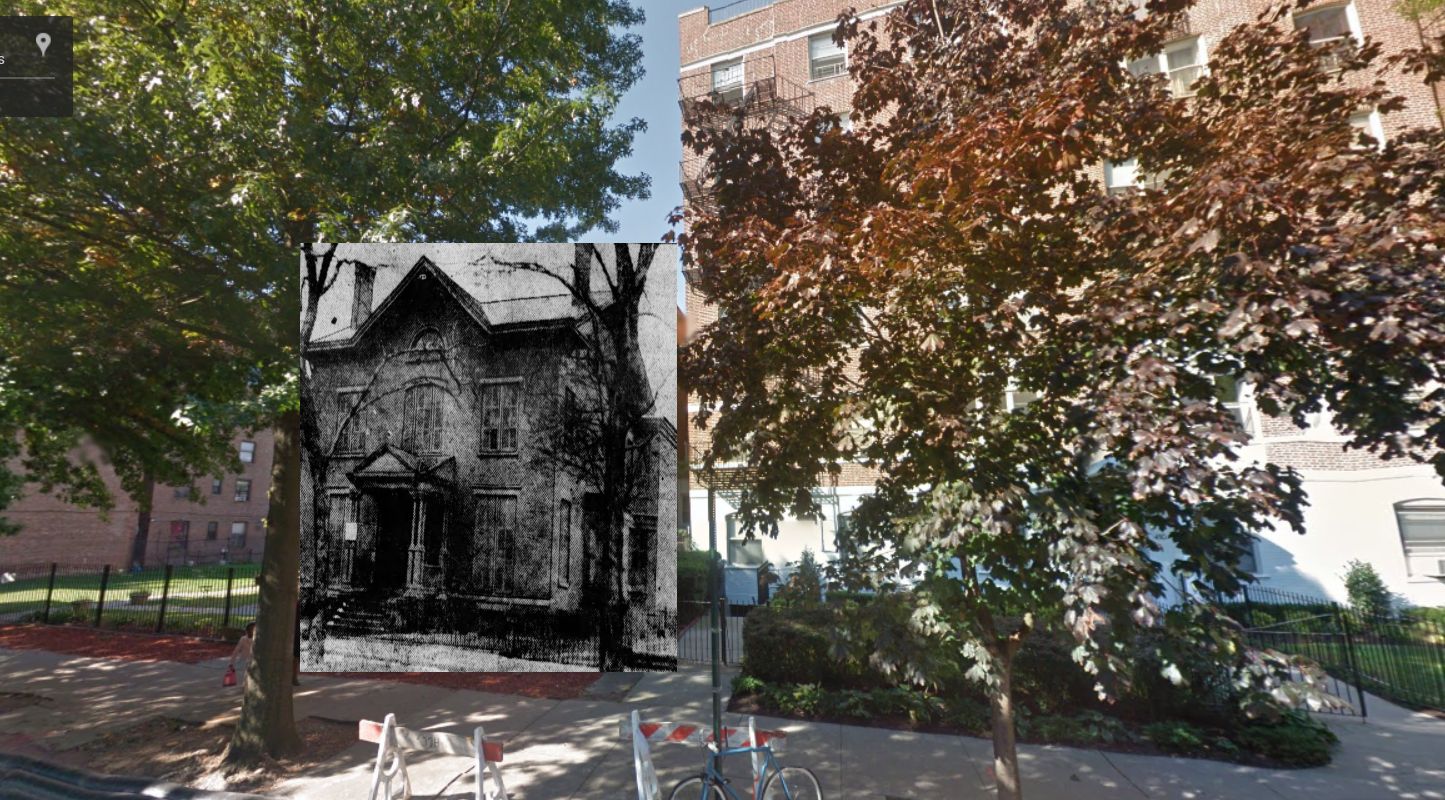
******************************************************************************************************************************** Brownstone Detectives investigates the history of our clients’ homes. The story you are about to read was composed from research conducted in the course of one of those investigations. Do you know the history of YOUR house? ******************************************************************************************************************************** When a house becomes commonly referred to by the owning family’s name, it can be expected that this family 1) built the house, 2) had lived there for some time, or 3) were well-known in the city. Robert Jackson (R.J.) Kimball embodied two of these indicators (No.’s 2 & 3). The Kimballs lived at No. 436 Clinton Avenue since the mid 1880s, and R.J., himself, was very well known. He was an active socialite who rose to build his fortune through banking and real estate. A senior member of the firm, R.J. Kimball & Co., a member of the stock exchange since 1866, and a trustee of the Pratt Institute, his name was very well-known throughout New York City and Brooklyn. Although Kimball passed in 1903, his wife continued to own the house until she sold it in 1921. 436 CLINTON ENTERS A NEW ERA In 1921, after the house had been vacant for a few years, a man by the name of Alfred H. Bromell of No. 59 Livingston Street, noticed the abandoned structure. Probably recognizing it for its value and status as a residence, he purchased the house and large lot. The plot was described as “60X200, which extended back to Vanderbilt av., where there is a garage,” and […]
BUTCHER, BAKER, UNDERTAKER (1895)
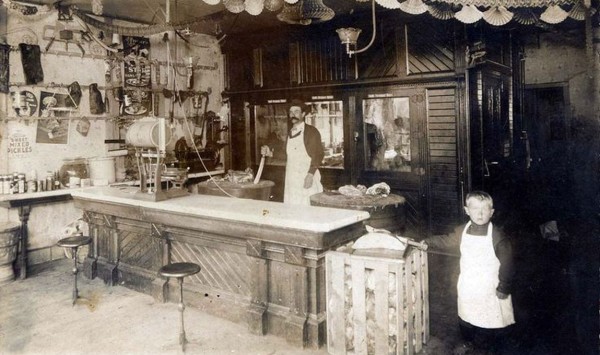
******************************************************************************************************************************** Brownstone Detectives investigates the history of our clients’ homes. The story you are about to read was composed from research conducted in the course of one of those investigations. Do you know the history of YOUR house? ********************************************************************************************************************************As the sleeping giant that is Bedford-Stuyvesant’s Ralph Avenue begins to awaken from its slumber, it is tempting to take a look back at some of the businesses that once lined this bustling thoroughfare. STUYVESANT EAST OF YORE The eastern section of Stuyvesant was alive with industry in the late part of the 19th and the early part of the 20th centuries. As houses had recently been built along the main streets, stores, schools, and churches had gone up along the avenues and on corners, dotting the landscape with their offerings. The neighborhood, after its initial build-up in the 1890s, became completely self-sufficient in terms of goods and services. Residents of Macon Street, like those from the other streets in the neighborhood, found themselves surrounded by a variety of offerings that would allow them – and their servants, in some cases – to satisfy the needs of their families easily and quickly. THE BUSTLING BUSINESS CORRIDOR THAT WAS RALPH AVENUE Starting in the late 19th century, Ralph Avenue became a busy local business corridor filled with a wide variety of shops and stores that suburban families needed to support households of consumers. Since its inception, the avenue had public transportation, in the way of horse-drawn omnibuses and then later a streetcar line, […]
THE METAMORPHOSIS OF A BROOKLYN BLOCK
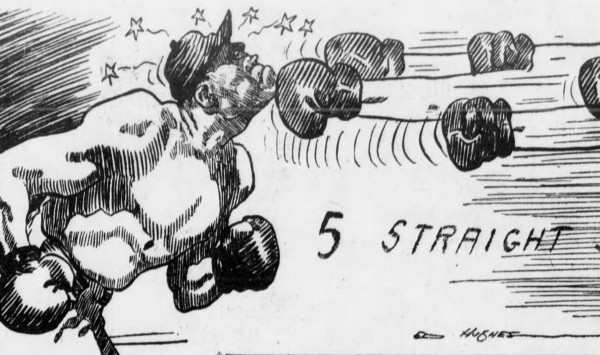
After showcasing some serious open-air ball playing, Saratoga Field was about to go indoors. There it would bear witness to a number of more diverse activities – dancing, fighting, and dreaming. But not necessarily in that order. By 1912, the owners of the block that Saratoga Field had utilized would realize the cash potential of developing the grounds for its marketing to commercial investors. Accordingly, they divided the land up into lots and sold it all off to real estate developers. Shortly afterwards, three new entertainment businesses would appear on the block – the Broadway Boxing Arena, the Halsey Theatre, and the Arcadia Dance Hall, all just across the street from the Brooklyn Rapid Transit (BRT) carbarn and Saratoga Square. THE BROADWAY ARENA The Broadway Arena (also known as the Broadway Sporting Club and the Broadway Exhibition Association Building) sat next to the Halsey Theatre (an alley in between), operating for close to 40 years. It was built around 1912 and had a capacity of 4,500 people. It would become Brooklyn’s top fight arena in the 1930s and 1940s, exhibiting the boxing skills of some of the country’s more well-known fighters, such men as Al Tiernan, Arturo Godoy (who fought Joe Louis in 1940), and Pete Sanstol. By 1951 the Broadway Arena was closed, the victim of competition from the television set. Its last boxing match was held on 29 November 1951. THE HALSEY THEATRE The Halsey Theater, a 2,100-seat theater, which originally presented both vaudeville and silent movies, was […]
SURVIVING THE ATLANTIC AVENUE “CUT” (1920)
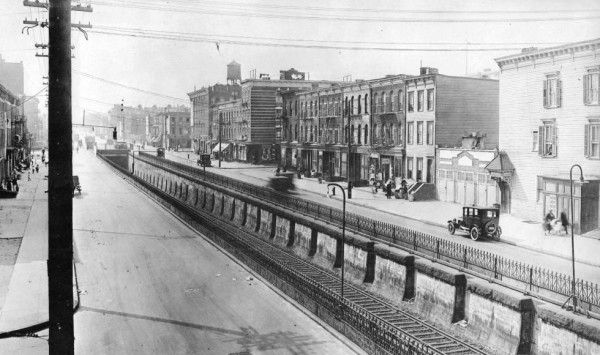
O! What a difference 90 years makes. The Long Island Rail Road (L.I.R.R.) “Cut,” which divided the eastward and westward sides of Atlantic Avenue, was a much more scenic feature back in the day. In this photograph taken looking eastward from Howard Avenue, a small family walks with a baby carriage at the lower right, and a woman, above them, looks out of the window. Shoppers along with residents of the houses fill the sidewalks, as they run errands, talk with one another, and take in the streets scenes, themselves. These scenes were representative of the entire stretch of the avenue of the time. As the automobile came into prominence, though, and repair shops and filling stations began congregating along the avenue, the people began to disappear, along with their residential buildings, the latter of which were really not that old at the time. Sadly, none of these buildings appear to be standing today. Notice the number of ornate Victorian-era wood-frame houses that were in existence then. Also, notice the cast-iron fencing that the L.I.R.R. used to keep pedestrians from falling – and drivers from plunging – down into the “cut.” Unfortunately, for a number of motorists driving in the direction of the tracks, this fencing was of little help. With the low height of the old cast iron fence that lined the “cut,” many night-time drivers had a difficult time realizing – as they perpendicularly approached the “cut” in the dark – that there was actually no path between […]
UMBRELLA WEEK…ALREADY? (1920)
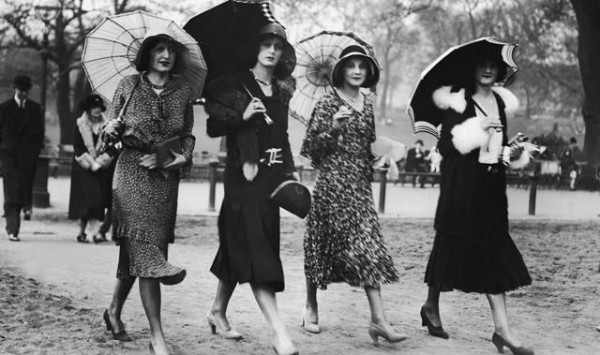
******************************************************************************************************************************** Brownstone Detectives investigates the history of our clients’ homes. The story you are about to read was composed from research conducted in the course of one of those investigations. Do you know the history of YOUR house? ******************************************************************************************************************************** If it was October of 1920, then you knew it was National Umbrella Week…right? Yaaaaaaaa……riiiiiiiiiiight…… At the very least, they were celebrating the occasion down at 114 Court Street. A product of the post-war marketing boom, “National Umbrella Week” was never celebrated again after 1920. But it was good while it lasted. Maybe it sold an extra umbrella or two. Who knows? THE BROOKLYN UMBRELLA COMPANY Today, we know 114 Court Street – that squat, 2-story, brick building in downtown Brooklyn – as a pizza joint. Back in 1919, though, it housed the Brooklyn Umbrella Company. The company sold umbrellas and they fixed umbrellas. This was back in a time when umbrellas were an investment in inclement weather – not throwaways cheaply mass-produced in China. Offering “linen gloria” and “union taffeta,” they sold “umbrellas that are a pleasure to carry.” Owned and operated by Isaac Smith Strong, The Brooklyn Umbrella Company started manufacturing umbrellas at this location around 1895. They finally closed up shop just a few years before the beginning of the depression, after which the location became a beauty shop and then later a restaurant. THE STRONG UMBRELLA Strong, himself, though, produced umbrellas well before 1895, but under his own name at 170 Fulton Street, and then later at […]
AFTER “NEGRO,” BEFORE “COLORED,” Pt. II (1920)
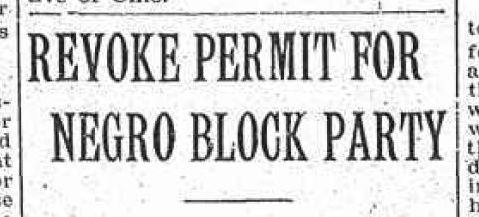
(Cont.’d from last week’s “After ‘Negro,’ But Before ‘Colored,’” Pt. I.) The permit for the “colored” Macon Street block party was revoked by the City at the last minute. Apparently, the white residents on Macon Street between Reid and Stuyvesant avenues, “who have been disturbed by the prospect of a block party there tonite for the benefit of a negro church are now at ease.” “The permit,” the July 1920 Brooklyn Eagle story noted, “which had been issued for roping off the block party” was revoked by the Highways Department, whose officials explained that Lucy Mayers had presented a petition from a number of residents on the block, asking permission for the party to be held.” However, as the residents of the block were predominantly white, when “some of them heard of the block party to be held for negroes they presented a counter petition with 140 names, a majority of the residents of the block, to the department, which then revoked the permit.” Police at the Ralph Avenue station said that “they had never been notified of the permit and they would have objected to the party,” if it had been held. The article does not say if the police meant that they would have objected to a party held by “colored folks” that was objected to by white residents, or if they would have objected to a “colored” block party, in general. The block party’s church committee stated that they were “returning the money for tickets bought for […]
REMEMBERING BROOKLYN’S UNDEAD (1922)
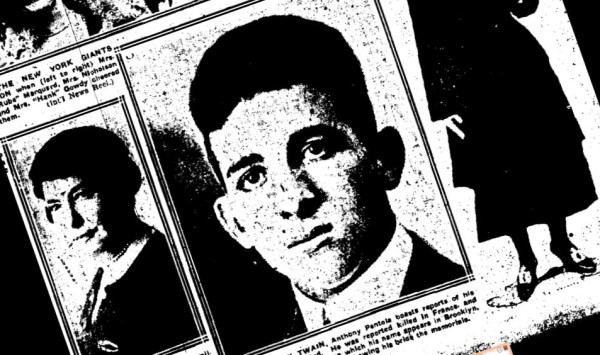
“Reports of my death have been greatly exaggerated.” So reflected Mark Twain to a reporter with William Randolph Hearst’s New York Journal in 1897, after the New York Herald had incorrectly reported that the famous writer had passed away while in London. While journalists are taught from their very first story to “trust but verify,” the U.S. military, though, has never fostered suffering compunction from such mistakes made. So it was when reports were being dispatched back to the U.S. during the First World War. While the adjutants of these military units, whence the reports originated, were doing their best to keep track of deaths and injuries, it can be imagined that quite a few names were inadvertently added to one or the other of the lists. After the Great War, accounts of American soldiers often surfaced, of their having previously been added to the list of the war dead, and then having shown up quite healthy – and with plans to continue living for many years to come. Such was the case with one Brooklyn man, Anthony Pentola, who, upon returning to the U.S. after fighting in the Great War, learned that not only had he been reported amongst the war dead, but that, he subsequently realized, his greatest and most substantial proof against the correctness of this report – his appearance one day in the War Department – was woefully insufficient in reversing the departments’s bureaucratic march toward its repeated lionization of him as an American patriot for […]